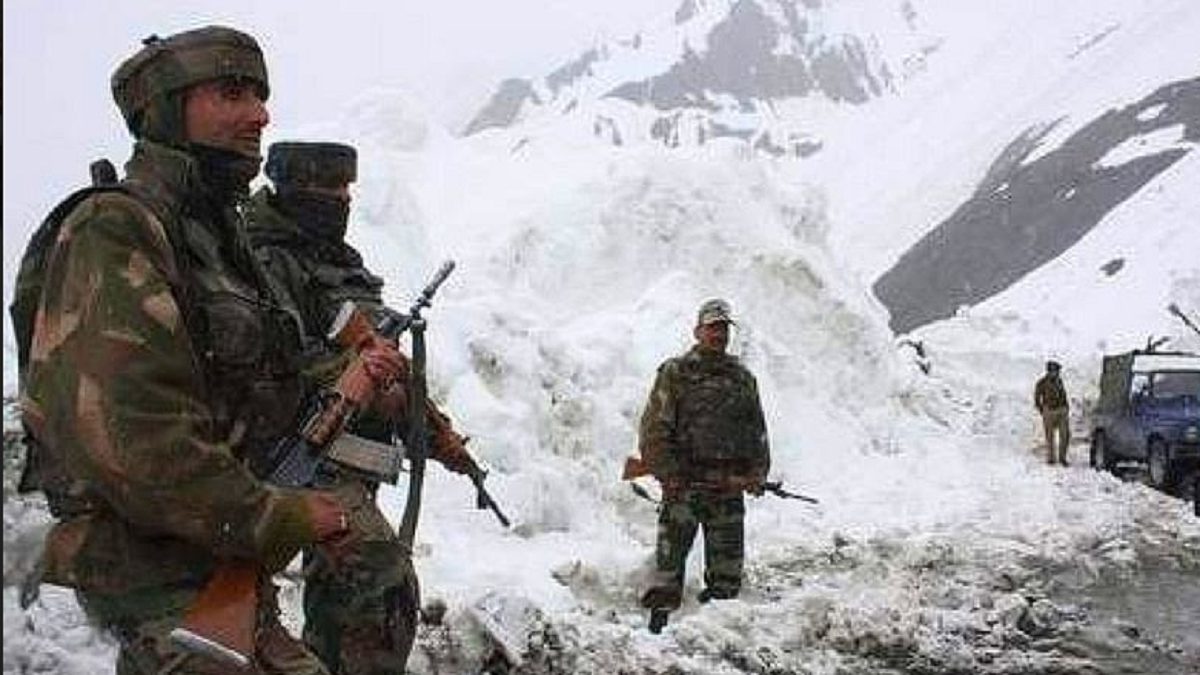The 9 August announcement by Defence Minister Rajnath Singh placing an embargo on imports of 101 items is a game-changer as it will lead to a much-needed ecosystem and direction to self-reliance in defence manufacturing. The negative arms list will force Indian R&D and defence industry to develop and manufacture critical arms and equipment in India as import is no longer an option. However, equally or more important is to incentivise and encourage private defence industry to take the lead rather than bank upon the lethargic and suboptimal Ordnance factory board to drive the “Aatmanirbhar” initiative.
The recent multiple transgressions/incursions by China along the LAC and the treachery by the PLA at Galwan are a wakeup call for the nation and the armed forces. As China blatantly indulges in military coercion, India, and the Army in particular needs to be future-ready to deter China’s aggressive behaviour along the LAC. China respects strength and India will have to counter China from a position of relative strength. A peaceful, risen, responsible, resurgent India has to ensure continued peace through military preparedness. On account of competing priorities on a limited budget, which will take a further hit due to the Covid-19 impact, the Ministry of Defence will have to look inwards and ensure optimal utilisation of resources to meet and mitigate the China threat. While the disengagement process will be lengthy and laborious, the armed forces should plan ahead and be future-ready.
One of the major weaknesses in our capabilities and capacities is a weak Defence Industrial Base, centred around the government owned and operated 41 Ordnance factories and 9 DPSUS. India honestly does not have a defence industrial base to support the defence needs. We are the largest arms importers with 13% of global sales according to SIPRI data. India increased its arms imports by 43% between 2007 and 2011 and 2012-16 periods. About 60- 65% of military hardware is of Russia/Soviet Origin. If you take the import figures since 1950 to 2017 India has imported $119.89 billion worth of arms by far the largest, double than that of Saudi Arabia.

To the credit of MoD, the Defence Minister has given added impetus and focus to defence reforms, initiating action on many critical -pending issues. India needs to be Self Reliant in Defence and for that the private players have to play a leading role duly supported by the government and the armed forces. A self-reliant India in the defence sector is an imperative to position itself as a global leader, and deter China’s aggressive behaviour. Presently, the military is supported mostly by a captive OFB, which continues to follow archaic procedures and processes, resisting any change as it disturbs the comfort levels and existing equilibrium of the eighty odd thousand workforce and the management.
The orders placed on the OFB and DPSUs are to the tune of Rs 59,000 crore, however, it is doubtful whether the armed forces have been given a reasonable deal. The defence budget is already stressed as the armed forces try to optimise the resources by cutting costs. As the armed forces are captive, they have no say in pricing often incurring higher costs for products which can be procured at lesser rates. Competition is essential for better quality products at appropriate costs. In addition the armed forces maintain a large inventory to cater for war wastage reserves (WWR). The costs to maintain this large inventory including infrastructure is prohibitive. The private industry should be encouraged and incentivised to become an integral part of the defence preparedness. The large WWR inventory can be reduced in case the industry has surge capacities built in the defence sector, which will cater for emergent situations reducing the dependence on imports.
It is a common belief and a known fact that the OFB products are of poor quality, not reliable and come at a prohibitive cost on account of time and cost overruns. The soldiers also lack faith in OFB products on account of many accidents which occur due to poor quality of munitions at regular intervals causing avoidable loss of life and limbs. The military is captive and has no say in the costing which results in avoidable drain on a depleting defence budget. On account of a near total monopoly there is zero incentive and accountability for the ordnance factories to innovate and improve products. Numerous committees over the years have been set up to revamp the Ordnance factories, but the resistance from the workforce has succeeded in ensuring an uncanny status quo as the present system serves the best interests of the 80,000 plus workforce, guarding the turf. Nation and national security have to take priority over misplaced interests of a few who continue to thrive in a comfort zone. Earlier attempts by the government to corportise the OFB met with stiff resistance, wherein the workforce went on a strike paralysing defence production. So much so it was also reported that the work force threatened to strike work as on 01 July if the government insisted on corporatisation, this in the face of the ongoing situation along the LAC. Turf apparently is more important than the nation.
Numerous committees set up by the government have recommended corporatisation of the OFB, starting with T.K.A. Nair Committee (2000), Vijay Kelkar Committee (2004) , Raman Puri Committee (2015) and the Shekatkar Committee, a committee of experts convened by Manohar Parikar in 2016, recommended the corporatisation of the OFB. Based on the report and to strengthen their self-reliance in defence production, the Government announced on 16 May 2020 under the Aatmanirbhar Bharat package, that corporatisation of OFB would be undertaken to improve autonomy, accountability and efficiency in ordnance supplies.
The proposed transformation of OFB from a Government department to a public sector corporate entity will further defence preparedness, contributing to transforming “Indian military from a military force to a military power”.
The advantages that will accrue include:
• Enhance effectiveness and improve efficiency, move towards optimal costing.
• Reduce import dependency for arms and ammunition.
• Enhanced combat efficiency of the armed forces, ensuring customer satisfaction through timely delivery.
• Greater penetration in the defence export market.
• Leap-frogging technology and innovation for self-reliance in defence.
• Sustainable business model and creation of jobs in the long run.
• Increase production capacity and retention of capability & knowledge base.
• Improve flexibility and dynamism in decision making as corporate entity without shackles of Government procedures.
• Move away from cost plus mechanism to competitive pricing.
• Under-utilized capacities in factories will be better utilised.
• Timely supply and quality of supplies by the factories will be improved.
• Corporate entity to move from production based to technology based organisation enhancing selfreliance.
• Increased turnover/profitability to lead to enhanced employment and better service conditions for employees.
• Greater flexibility in technology acquisition through overseas assets.
• Top management in the corporatized structure would be in a position to provide leadership and could initiate change process to respond to competition. The factories may be able to create new streams of revenues by leveraging engineering and technological capabilities.
• Corporatised ordnance factories can form strategic alliances with Indian and overseas companies to develop new products. And carve out a niche in the international armament industry.
Corporatisation of OFB into a 100% governmentowned public sector unit will also ensure quality arms and equipment enhancing the combat and cost effectiveness. The time for change is now, the government has implemented many hard decisions in the interest of national security, corporatisation of the OFB is an imperative and will contribute to transforming the military from a force to a power, ensuring peace through preparedness. The armed forces need to deter China’s aggressiveness ensuring territorial integrity which is best done from a position of relative strength. An Aatmanirbhar Bharat in defence manufacturing is a must; the beginning should be the corporatisation of OFB.
Lt Gen Vinod Bhatia (Retd.) is the former Director General of Military Operations, Indian Army. He is currently the Director, Centre for Joint Warfare Studies (CENJOWS) and member of the Seketkar committee. Views expressed are that of the author and do not necessarily reflect the views of CENJOWS.

